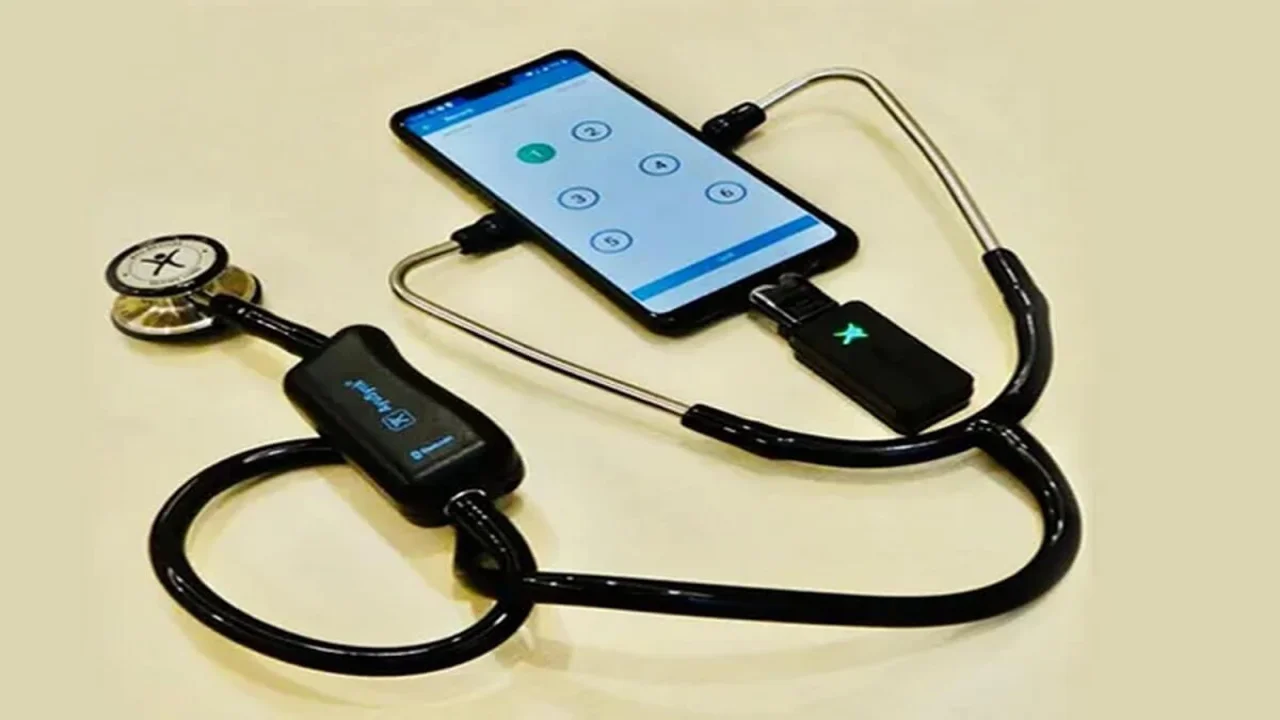Best Digital Stethoscope for Doctors: A Comprehensive Guide
Discover the best digital stethoscope for doctors, offering superior sound amplification, noise reduction, and wireless connectivity. Learn how digital stethoscopes work and compare top models for enhanced patient care.

Digital stethoscopes are revolutionizing the way healthcare professionals, especially doctors, diagnose and monitor patients. These advanced devices offer superior sound quality, amplifying the body sounds that are critical for accurate diagnosis. In this guide, we’ll explore everything doctors need to know about digital stethoscopes, including their benefits, how they work, and why they are a must-have tool in modern medical practice.
What is a Digital Stethoscope?
A digital stethoscope is a medical device that converts acoustic sound into electronic signals. Unlike traditional stethoscopes, digital versions can amplify sounds, filter noise, and even record heart or lung sounds for further analysis. The integration of digital technology has made this tool indispensable in settings where precision and clarity are paramount.
How Does a Digital Stethoscope Work?
Understanding how digital stethoscopes work is essential for anyone considering upgrading from a traditional analog model. These stethoscopes function by using sensors to pick up sound waves and convert them into digital signals. The sounds can then be amplified, filtered, or transmitted wirelessly for real-time monitoring. Some models even come with software to analyze these signals, making diagnosis faster and more accurate.
Benefits of Using a Digital Stethoscope
The benefits of digital stethoscopes are vast and transformative for healthcare providers:
- Enhanced Sound Amplification: Digital stethoscopes amplify sounds up to 100 times more than analog versions, allowing doctors to detect faint abnormalities.
- Noise Reduction: Many models feature noise-cancellation technology, ensuring that external noise does not interfere with critical diagnostic sounds.
- Recording and Storing Data: Physicians can record heart or lung sounds, store them digitally, and share them with specialists for consultation, leading to more informed diagnoses.
- Wireless Connectivity: Certain wireless digital stethoscopes allow real-time sharing of sound data with colleagues or within telemedicine platforms, making them invaluable in remote care settings.
Digital Stethoscope vs. Analog: Which is Right for You?
When considering a digital stethoscope vs. analog, many healthcare professionals wonder which is better. Analog stethoscopes are classic, reliable tools that have been in use for decades. However, digital stethoscopes surpass their analog counterparts in terms of functionality:
- Clarity: Digital stethoscopes filter out background noise and provide clearer sound, crucial for diagnosing conditions such as heart murmurs or lung complications.
- Functionality: Digital models offer multiple sound settings, from amplifying frequencies to wireless transmission, enabling doctors to adjust to specific patient needs.
- Cost: Digital stethoscopes are more expensive than analog versions, but their advanced features often justify the investment, especially for specialists in cardiology or pulmonology.
History of the Digital Stethoscope
The history of the digital stethoscope dates back to the early 1990s when advancements in digital technology began influencing medical tools. Over the years, companies like Littmann, Eko, and Thinklabs have refined their stethoscopes, pushing the boundaries of what these devices can do. From simple amplification to complex digital analysis, the evolution of the stethoscope has transformed patient care.
Pediatric Digital Stethoscopes: A Game Changer for Pediatricians
For pediatricians, using a pediatric digital stethoscope offers specific advantages. Children often have softer heart and lung sounds, making it difficult to assess them using traditional stethoscopes. With sound amplification, pediatric digital stethoscopes allow for accurate readings, ensuring that subtle conditions are not missed.
Wireless Digital Stethoscopes: Enhancing Telemedicine
The rise of telemedicine has made the wireless digital stethoscope an essential tool for remote care. These devices allow healthcare professionals to listen to a patient’s heart and lung sounds from a distance, improving access to healthcare for individuals in remote or underserved areas. Paired with telemedicine platforms, digital stethoscopes enable physicians to diagnose patients in real time, no matter their location.
Digital Stethoscope Comparison: Finding the Best Model
When choosing the best digital stethoscope for your practice, conducting a digital stethoscope comparison is essential. Here are a few top models to consider:
- Littmann Core Digital Stethoscope: Known for its excellent sound quality and noise-cancellation features, this model is popular among cardiologists.
- Eko DUO: This stethoscope comes with integrated ECG capabilities, making it ideal for doctors who need to monitor heart function in-depth.
- Thinklabs One: Small, lightweight, and incredibly powerful, this stethoscope offers top-notch sound amplification and wireless connectivity.
Conclusion: Choosing the Best Digital Stethoscope for Your Needs
The decision to switch to a digital stethoscope is a step toward embracing modern medical technology. Whether you need enhanced sound clarity, noise reduction, or wireless connectivity for telemedicine, digital stethoscopes offer numerous benefits. By understanding the different models available and their unique features, you can select the stethoscope that best meets your practice's needs, ensuring more accurate diagnoses and better patient care.
Main Takeaways:
- Digital stethoscopes provide superior sound amplification, noise reduction, and data recording.
- They outperform analog stethoscopes in precision, making them indispensable for modern healthcare.
- Models like the Littmann Core and Eko DUO offer specialized features that cater to different medical needs.
- Wireless digital stethoscopes are revolutionizing telemedicine, offering remote diagnostic capabilities.
Incorporating the right digital stethoscope into your practice can elevate the quality of care you provide, making these devices an excellent investment for any healthcare professional.
FAQs
What is a digital stethoscope?
How does a digital stethoscope work?
What are the benefits of using a digital stethoscope?
How is a digital stethoscope different from an analog stethoscope?
What is the history of the digital stethoscope?
What is the best digital stethoscope for doctors?
Can digital stethoscopes be used in pediatric care?
Are wireless digital stethoscopes useful for telemedicine?
What are the key differences between digital and electronic stethoscopes?
How do I choose the best digital stethoscope?
Last reviewed on .
Article history
- Latest version
- Posted by Dayyal Dungrela